You are here:
- Home
- Countries & Parks
- Tsavo East National Park
Tsavo East NP
Overview
Wildlife
Birds
Best Time To Visit
Weather & Climate
Getting There
Malaria & Safety
Overview
Wildlife
Birds
Best Time
Climate
Getting There
Malaria & Safety

By Fadhili Mlema
Fadhili is a seasoned East African safari expert with 15 years of experience crafting luxurious and authentic journeys. Deeply rooted in the region, his passion for wildlife and tourism has shaped his unparalleled expertise. Let Fadhili curate your ultimate African adventure.
By Fadhili Mlema
Fadhili is a seasoned East African safari expert with 15 years of experience .
- Live Location
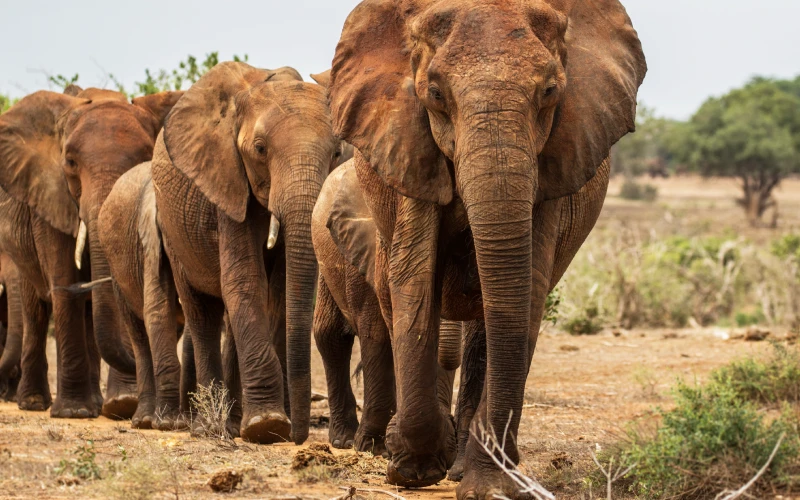


- View Photos


- Open Map
Best Time To Go
June to October and January to February (Optimal for wildlife viewing; minimal rain)
High Season
December to March and July to October (Still feels uncrowded)
Size
13,747 km² / 5,308 mi
Altitude
171–845 m / 561–2,772 ft
Tsavo East is a legendary stronghold for African wildlife. Towering elephants, dusted in the park’s iconic red soil, roam freely across open plains, while Tsavo’s famed maneless lions prowl the grasslands—silent, powerful, and unforgettable. The Big Five are all present, though black rhinos remain a rare sighting. Cheetahs, leopards, buffalo, and graceful antelopes complete the cast of this raw, untamed wilderness.
The scenery here is vast, wild, and cinematic. Open savannahs stretch beneath blazing skies, dotted with thorny bush and rock outcrops. Aruba Dam draws wildlife in large numbers, while Mudanda Rock offers panoramic views. The Galana River carves through the land, flanked by crocodile-infested pools and the roaring cascades of Lugard Falls. Northward lies the ancient Yatta Plateau—Earth’s longest lava flow, raw and majestic.
Tsavo East offers a pure, back-to-basics safari experience. Game drives, whether guided or self-driven, are the primary activity, taking visitors deep into predator territory and birding hotspots alike. From dawn patrols to golden-hour drives, every journey reveals something different: a lion’s silent stare, a cheetah’s sprint, a lilac-breasted roller taking flight. This is safari in its rawest form.
Tsavo East is hot and dry for most of the year, with semi-arid conditions dominating. The dry season, from June to October, offers clearer skies and manageable heat, making it ideal for photography and wildlife tracking. The wet season, from November to May, brings short, intense rains, accompanied by a greener landscape and scattered afternoon showers. The hottest stretch is between the short and long rains, when daytime temperatures can be intense but game viewing remains rewarding.
The dry months from June to October, and again in January and February, are perfect for wildlife safaris. During these seasons, the vegetation is sparse, animals concentrate around permanent water sources, and the skies remain crisp and clear. While the wet season showcases Tsavo’s green side, it also brings thicker bush and less predictable conditions. For the ultimate game viewing experience, choose the dry season when the wilderness opens up, and every corner promises discovery.








By Fadhili Mlema
Fadhili is a seasoned East African safari expert with 15 years of experience crafting luxurious and authentic journeys. Deeply rooted in the region, his passion for wildlife and tourism has shaped his unparalleled expertise. Let Fadhili curate your ultimate African adventure.
By Fadhili Mlema
Fadhili is a seasoned East African safari expert with 15 years of experience .
Tsavo East offers thrilling wildlife encounters across a raw, untamed wilderness. The Big Five are all present, though black rhinos remain elusive. Towering elephants, stained red by the park’s iron-rich dust, are a common and unforgettable sight. Lions patrol the open plains, while cheetahs may be seen sprinting across the savannah. Buffalo herds, graceful Masai giraffes, and zebras are frequently spotted across the landscape.
- Abundant
- Common
- Occasional
- Rare
- None
- Abundant
- Common
- Common
- Common
- Common
- Rare
- None
- Rare
- Occasional
- Rare
- Occasional
- Occasional
- Rare
Tsavo East offers thrilling wildlife encounters across a raw, untamed wilderness. The Big Five are all present, though black rhinos remain elusive. Towering elephants, stained red by the park’s iron-rich dust, are a common and unforgettable sight. Lions patrol the open plains, while cheetahs may be seen sprinting across the savannah. Buffalo herds, graceful Masai giraffes, and zebras are frequently spotted across the landscape.
Wildlife viewing is most rewarding during the Dry season from June to October, when sparse vegetation and concentrated water sources make animals easier to spot. The dry window between January and February also offers superb sightings, as the bush remains open and active between the short and long rains.
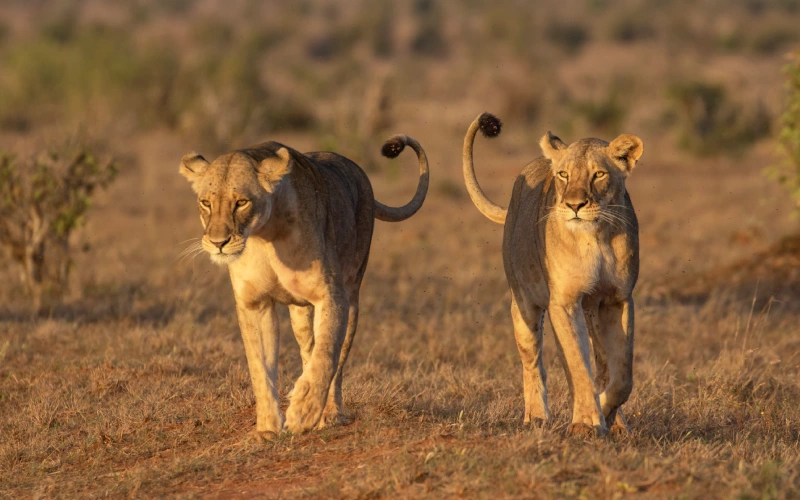


- View Photos








By Fadhili Mlema
Fadhili is a seasoned East African safari expert with 15 years of experience crafting luxurious and authentic journeys. Deeply rooted in the region, his passion for wildlife and tourism has shaped his unparalleled expertise. Let Fadhili curate your ultimate African adventure.
By Fadhili Mlema
Fadhili is a seasoned East African safari expert with 15 years of experience .
Notable Birds in Tsavo East NP


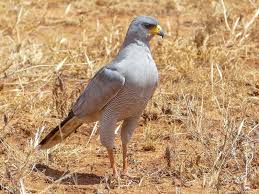

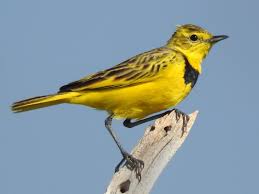

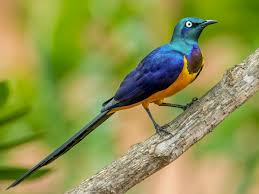

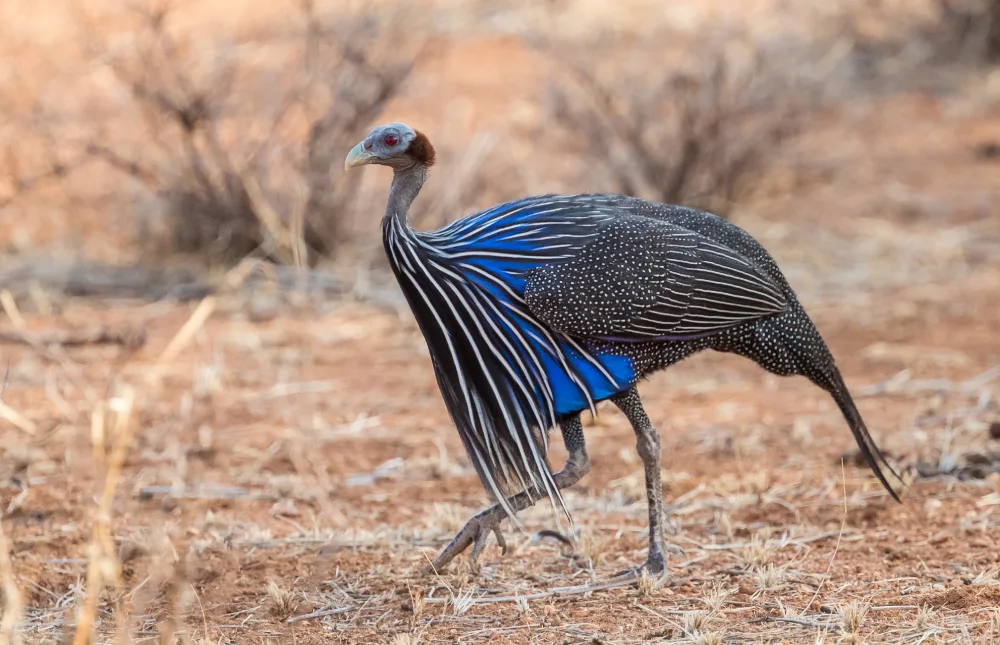

Birding in Tsavo East is exceptional all year round. Its arid-region residents provide consistent viewing opportunities in every season. However, from November to April, the park’s birdlife becomes even more diverse with the arrival of migratory species. Occasional heavy rains in November and April may occur, but rarely interfere with birding experiences.
Bird Species
500
Migratory Birds
Nov to Apr








By Fadhili Mlema
Fadhili is a seasoned East African safari expert with 15 years of experience crafting luxurious and authentic journeys. Deeply rooted in the region, his passion for wildlife and tourism has shaped his unparalleled expertise. Let Fadhili curate your ultimate African adventure.
By Fadhili Mlema
Fadhili is a seasoned East African safari expert with 15 years of experience .
Jan
Feb
Mar
Apr
May
Jun
Jul
Aug
Sep
Oct
Nov
Dec
- Excellent
- Good
- Fair
- Poor
The prime time to explore Tsavo East is during the dry months from June to October and January to February, when wildlife congregates around limited water sources, offering exceptional game viewing opportunities. During the rainy seasons—particularly April (long rains) and November (short rains)—dense vegetation and widespread water reduce animal visibility, though the park becomes strikingly lush.
Best Time
June to October and January to February (Excellent for wildlife sightings; minimal rain)
High Season
December to March and July to October (The park remains uncrowded even in peak periods)
Low Season
April to June (Lower visitor numbers and discounted rates may apply)
Best Weather
June to September and January to February (Dry and sunny conditions)
Worst Weather
April and November (Most rainfall and occasional disruptions)



- View Photos








By Fadhili Mlema
Fadhili is a seasoned East African safari expert with 15 years of experience crafting luxurious and authentic journeys. Deeply rooted in the region, his passion for wildlife and tourism has shaped his unparalleled expertise. Let Fadhili curate your ultimate African adventure.
Tsavo East experiences a predominantly hot and arid climate, typical of Kenya’s lowland savannah. This iconic landscape is ruled by sunshine, with soaring daytime temperatures averaging 31°C (88°F) and balmy nights settling around 20°C (68°F). Rain comes in dramatic bursts during the short rains (November) and the long rains (April), transforming the terrain into a fleeting canvas of green.
This is Tsavo at its rawest and most rewarding. The air is crisp, the skies are clear, and wildlife concentrates around shrinking waterholes, offering extraordinary safari moments.
- June & July – Pleasant and dry, with average highs near 29°C (84°F) and clear game-viewing conditions.
- August & September – Slightly warmer, still ideal for safaris, with wildlife activity intensifying.
- October – Hot and humid as the park prepares for the first showers; animal sightings remain excellent.
The rains awaken the land, breathing life into the dusty plains. While wildlife disperses slightly, birding thrives, and the scenery is vivid and lush.
- November & December (Short rains) – Expect afternoon downpours followed by radiant sunsets. Daytime temperatures reach 31°C (88°F).
- January & February – A dry window between rains; February sizzles at 32°C (90°F), perfect for big cat sightings and migratory bird arrivals.
- March, April & May (Long rains) – Thunderclouds build and rains peak, especially in April. Temperatures hover around 32°C (90°F). Though roads may challenge, the reward is a wilder, quieter park.
- Live Location



- View Photos








By Fadhili Mlema
Fadhili is a seasoned East African safari expert with 15 years of experience crafting luxurious and authentic journeys. Deeply rooted in the region, his passion for wildlife and tourism has shaped his unparalleled expertise. Let Fadhili curate your ultimate African adventure.
Tsavo East National Park lies in southeastern Kenya and is easily accessible from both Nairobi and Mombasa. The two primary international gateways are Jomo Kenyatta International Airport (NBO), located 15 km (9 mi) southeast of Nairobi, and Moi International Airport (MBA), 9 km (6 mi) west of Mombasa.
The park’s main entry points include Voi Gate, approximately 325km/202 mi from Nairobi, and Buchuma Gate, around 100km/62 mi from Mombasa. Travel by road takes approximately 6 to 8 hours from Nairobi and 2 to 4 hours from Mombasa, depending on traffic and weather conditions. Visitors arriving from coastal towns such as Malindi or Watamu can use Sala Gate, located roughly 105 km (65 mi) from Malindi, a 1.5- to 2-hour drive by road.
The Madaraka Express train offers a convenient alternative, operating three times daily between Nairobi and Mombasa (6 hours). It stops at Voi, just 4 hours from Nairobi and 2 hours from Mombasa. Transfers from Voi to the park should be pre-arranged—many lodges and safari operators include this in their packages.
While there are no scheduled commercial flights directly into Tsavo East, the park is served by several airstrips that accommodate charter flights. These are usually organised as part of tailor-made safari tours.
- Main Park Location
To find the best flight options into Kenya, check for fares to Jomo Kenyatta International Airport (NBO) or Moi International Airport (MBA).
Please refer to our ‘Getting There – Kenya’ section for detailed information on passport validity, visa requirements, vaccinations, and other essential travel documentation.








By Fadhili Mlema
Fadhili is a seasoned East African safari expert with 15 years of experience crafting luxurious and authentic journeys. Deeply rooted in the region, his passion for wildlife and tourism has shaped his unparalleled expertise. Let Fadhili curate your ultimate African adventure.
Tsavo East National Park is widely regarded as a safe destination for travellers. Kenya’s national parks and reserves are generally free from crime, and Tsavo East is no exception. While occasional petty crime may occur in urban areas, standard travel precautions are usually sufficient when passing through cities or towns (see ‘Cities & Urban Areas: Safety Precautions’ below). Incidents inside the park are sporadic, and the vast majority of visitors enjoy trouble-free safaris.
For updated information on travel safety in Kenya, refer to the latest advisories from your government (see ‘Governments’ Travel Advice for Kenya’ link below).
Consult your doctor or a travel health specialist for the most up-to-date recommendations on vaccinations before visiting Kenya. Tsavo East is located in a malaria-prone area, so taking antimalarial medication is strongly advised. Additional protective measures, such as applying mosquito repellent containing DEET and covering exposed skin at dusk, further reduce the risk. Malaria transmission is typically highest during the rainy seasons, from March to May and November to December.
Wildlife viewing in Tsavo East is considered very safe when guided by a professional. Always follow the instructions given by your guide and refer to our ‘Wildlife Viewing Safety Precautions’ to ensure a secure and enjoyable experience.

